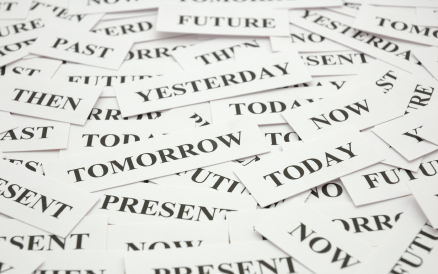Why Competitors Hate Competition
 The last 2-3 decades have been a time of business exuberance—not just in terms of revenue and earnings growth, but in thought as well. In that time-frame, we’ve seen the emergence of several slogans: greed is good, the social purpose of a corporation is to make a profit, markets are self-correcting—to name just a few.
The last 2-3 decades have been a time of business exuberance—not just in terms of revenue and earnings growth, but in thought as well. In that time-frame, we’ve seen the emergence of several slogans: greed is good, the social purpose of a corporation is to make a profit, markets are self-correcting—to name just a few.
No other concept has been more enshrined in capitalism than the notion of competition. Just to pick one example, here is Milton Friedman on public schools, suggesting that “the only solution is competition.” Adam Smith has been taken somewhat out of context by free-market thinkers, who focus on this quote:
“Every individual…generally, indeed, neither intends to promote the public interest, nor knows how much he is promoting it. By preferring the support of domestic to that of foreign industry he intends only his own security; and by directing that industry in such a manner as its produce may be of the greatest value, he intends only his own gain, and he is in this, as in many other cases, led by an invisible hand to promote an end which was no part of his intention.”
They forget. They forget not only that Smith’s “invisible hand” was first used to refer to a collective sense of morality, in his also-forgotten book The Theory of Moral Sentiments; a book that arguably Smith felt was the greater of the two.
Competition is Inherently Unstable
Way back when I was in business school, the focus of attention was not on competition—the focus was on competing. And the basic point of competing was—to get rid of competition. There is an irony here, one that capitalist theorists rarely remark on. Free marketeers prefer to believe that markets are self-correcting: Alan Greenspan famously assumed that Wall Street firms’ regard for their own long-term reputation would serve as a safeguard against bad behavior.
Out there in the real world, no sentient being should be surprised. There’s a reason we have regulation: because left unregulated, the natural end state of competition is monopoly.
There’s a reason we have anti-trust laws—to prevent the accretion of excessive market power, which destroys competition.
There’s a reason that airlines are regulated, because without it you could predict market share based solely on balance sheets, and it would approach one competitor;
There’s a reason that banks are regulated–without it you’d have even more Ponzi schemes than we’ve recently seen;
There’s a reason Microsoft winks at piracy in China, and tries to incorporate every software tool within Windows—because they’re competing, which means trying to put their competitors out of business.
The free marketeers have also conveniently ignored Adam Smith himself, who also said:
"People of the same trade seldom meet together, even for merriment and diversion, but the conversation ends in a conspiracy against the public, or in some contrivance to raise prices."
The proper role of regulation in a capitalist system is to keep shuffling the deck; to referee the game; to make fair and foul calls; to continually maintain an artificial state of affairs—the state of competition. I’m not the only one to note the irony of free-market fans generally opposing all efforts to preserve competition.
Competition in the 21st Century
All this is relevant because the nature of competition is shifting—from companies to supply chains. Where industries used to be made up of vertically integrated large corporate entities, today they are made up of far more complex inter-locking relationships, which in turn are constantly changing.
The original dominance of the US in high tech and software was due not to any one company, or even companies. It was due to Silicon Valley: a network of people and talent, constantly morphing corporate forms.
I wrote about this back in 2002, in The Death of Corporations. Maybe that title was a little ahead of its time, but it still reads well. The real competition that is happening in today’s world is not happening among big corporate competitors; it is playing out at the level of individuals, of personal careers.
Competition plays out not in some sclerotic battle of corporate dinosaurs—it plays out at a far more granular level, like the competition for a given job, or in emerging markets, or a few cutting edge technologies. Chris Meyer and Julia Kirby make a similar point, in a current HBR piece called Pseudo-Competition, saying:
The quest for "sustainable competitive advantage" that has so captivated executives and their consultants is antithetical to the ideal of "free markets." Today’s form of capitalism offers management an overwhelming incentive to amass market power and dare regulators to stop them.
But there is one other aspect of competition that is emerging: the fact that to compete in the 21st Century, you also have to collaborate. No business is so isolated that it can afford to do everything alone. In a world where scale is global, and technologies are advanced, only fools try to go it all alone.
To Compete, You Have to Collaborate
So here’s an irony for you: to be competitive, you have to collaborate. Sometimes (look at the software industry) you have to collaborate with the same businesses that you compete with in other product lines. Not only that, but that form of collaboration is not anti-competitive—it’s what Silicon Valley did. The talent, the intellectual capital, the know-how, do not reside within corporate walls. They reside in other people. Those who succeed are those who harness the capabilities of others, regardless of who writes the others’ paycheck.
Competition still works: it just doesn’t work via the ways of competing that were developed a century ago. The new invisible hand rewards those who collaborate better; it punishes those whose idea of competition is to go it alone against others.

 Anyone who’s been in professional services for more than a week has probably encountered a tricky client situation or two. Some examples:
Anyone who’s been in professional services for more than a week has probably encountered a tricky client situation or two. Some examples: When we hear the phrase “Trusted Advisor,” most of us think of external experts: consultants, actuaries, accountants, lawyers, the professions. But there is another group for whom that term is at least as relevant—maybe even more so. That group is made up of internal staff functions: and mainly the “Staff Big Four:” HR, IT, Legal and Finance.
When we hear the phrase “Trusted Advisor,” most of us think of external experts: consultants, actuaries, accountants, lawyers, the professions. But there is another group for whom that term is at least as relevant—maybe even more so. That group is made up of internal staff functions: and mainly the “Staff Big Four:” HR, IT, Legal and Finance. In each pair, guess which city has the higher violent crime rate?
In each pair, guess which city has the higher violent crime rate?  I used to suffer from a particularly bad version of one part of the human condition—a tendency to see things as all about me. I tried like crazy, in many ways, to pull myself up by my own bootstraps. I’ve gotten, well, better; but it wasn’t because of my bootstrap pulling.
I used to suffer from a particularly bad version of one part of the human condition—a tendency to see things as all about me. I tried like crazy, in many ways, to pull myself up by my own bootstraps. I’ve gotten, well, better; but it wasn’t because of my bootstrap pulling. Monday night I was the
Monday night I was the  Life seems to happen to me in twos. A few weeks ago I blogged about
Life seems to happen to me in twos. A few weeks ago I blogged about  A few months ago,
A few months ago,